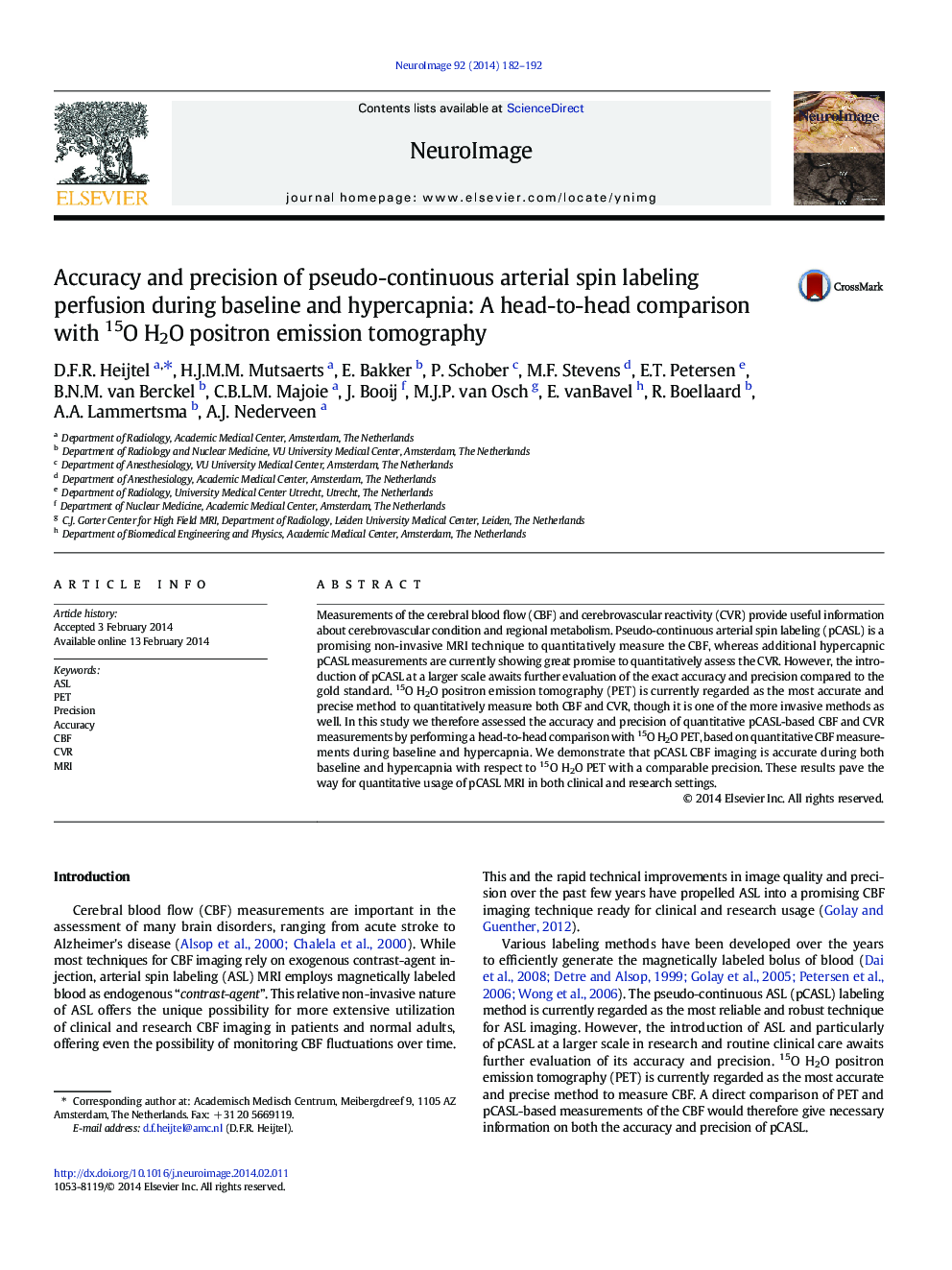| Article ID | Journal | Published Year | Pages | File Type |
|---|---|---|---|---|
| 6027595 | NeuroImage | 2014 | 11 Pages |
Abstract
Measurements of the cerebral blood flow (CBF) and cerebrovascular reactivity (CVR) provide useful information about cerebrovascular condition and regional metabolism. Pseudo-continuous arterial spin labeling (pCASL) is a promising non-invasive MRI technique to quantitatively measure the CBF, whereas additional hypercapnic pCASL measurements are currently showing great promise to quantitatively assess the CVR. However, the introduction of pCASL at a larger scale awaits further evaluation of the exact accuracy and precision compared to the gold standard. 15O H2O positron emission tomography (PET) is currently regarded as the most accurate and precise method to quantitatively measure both CBF and CVR, though it is one of the more invasive methods as well. In this study we therefore assessed the accuracy and precision of quantitative pCASL-based CBF and CVR measurements by performing a head-to-head comparison with 15O H2O PET, based on quantitative CBF measurements during baseline and hypercapnia. We demonstrate that pCASL CBF imaging is accurate during both baseline and hypercapnia with respect to 15O H2O PET with a comparable precision. These results pave the way for quantitative usage of pCASL MRI in both clinical and research settings.
Related Topics
Life Sciences
Neuroscience
Cognitive Neuroscience
Authors
D.F.R. Heijtel, H.J.M.M. Mutsaerts, E. Bakker, P. Schober, M.F. Stevens, E.T. Petersen, B.N.M. van Berckel, C.B.L.M. Majoie, J. Booij, M.J.P. van Osch, E. vanBavel, R. Boellaard, A.A. Lammertsma, A.J. Nederveen,
